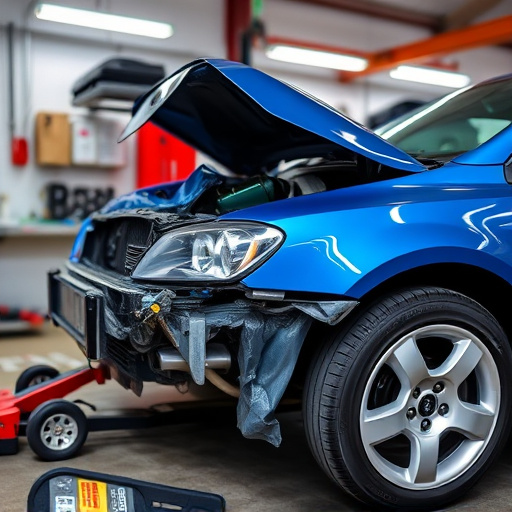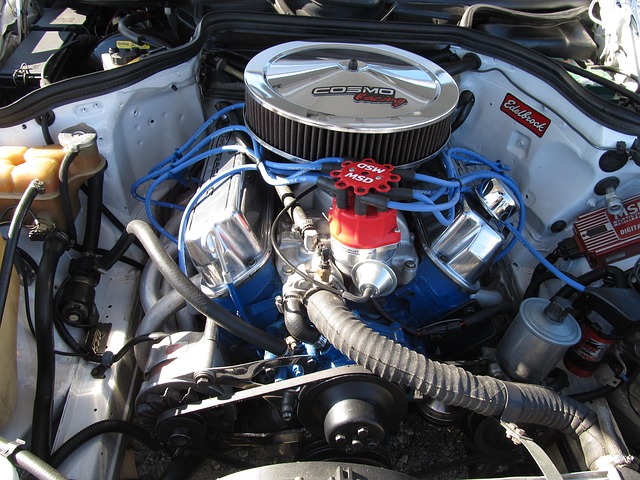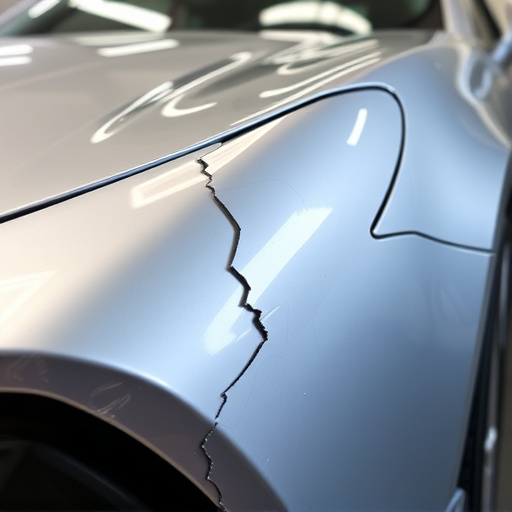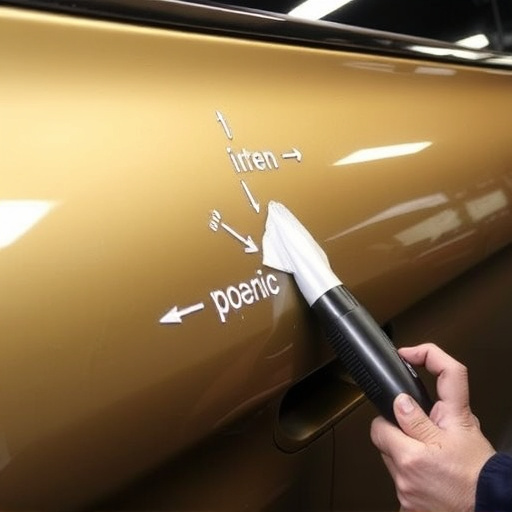Electronic diagnostics repair is a critical, specialized field in modern vehicle maintenance, focusing on complex computer systems controlling vehicle functions. Technicians decipher codes, analyze data with advanced tools, and perform precise repairs. Accurate diagnostics are vital for safety, performance, and equipment longevity across industries like automotive collision repair and manufacturing, preventing costly mistakes and enhancing efficiency. Structured methods, technical skill, and detail-oriented work ensure successful troubleshooting and restoration of electronic systems.
In today’s digitally driven world, accurate electronic diagnostics repairs are crucial for maintaining optimal equipment performance. This article delves into the significance of proficient electronic diagnostics repair techniques. We explore fundamental concepts, highlighting their impact on overall equipment efficiency. By understanding these principles, professionals can implement effective strategies to ensure precise troubleshooting and repairs. Ultimately, mastering these skills is key to minimizing downtime and maximizing asset longevity in various industries.
- Understanding Electronic Diagnostics Repair Fundamentals
- The Impact of Accurate Repairs on Equipment Performance
- Strategies for Effective Electronic Diagnostics Repair Techniques
Understanding Electronic Diagnostics Repair Fundamentals

In the realm of modern vehicle repair, electronic diagnostics repair stands as a cornerstone for accurate and efficient automotive restoration. This specialized field involves the meticulous understanding and tinkering with intricate computer systems that control various aspects of a vehicle’s functionality. At its core, electronic diagnostics repair focuses on diagnosing and rectifying issues within these electronic modules, ensuring they function optimally. It’s not just about fixing broken parts; it’s about deciphering complex codes and data to pinpoint precise problems, a skill set crucial for top-tier Mercedes Benz collision repair, among other vehicle repair services.
Mastering the fundamentals of electronic diagnostics repair means navigating through a web of sensors, microprocessors, and communication protocols. Technicians must be adept at interpreting diagnostic trouble codes (DTCs), using advanced tools to scan and analyze data, and replacing faulty components or reprogramming systems as needed. This expertise is essential for achieving precise repairs, especially in today’s increasingly complex automotive landscape where vehicles are essentially high-tech machines, requiring a deep understanding of both traditional and electronic repair techniques for optimal vehicle performance.
The Impact of Accurate Repairs on Equipment Performance

Accurate electronic diagnostics repair plays a pivotal role in ensuring optimal equipment performance. When vehicles or machinery undergo complex repairs, precise adjustments and calibrations are required to meet modern standards. Inaccurate fixes can lead to persistent issues, compromising efficiency and safety. For instance, in automotive sectors like Mercedes Benz collision repair, an incorrect diagnostic might result in faulty sensor readings, affecting acceleration, braking, or even engine performance.
This is particularly critical in industries where precise operations are essential, such as paintless dent repair, which relies on advanced technology for minimal auto body repairs. Inaccurate diagnostics can cause further damage, increasing costs and downtime for these businesses. Therefore, investing in capable electronic diagnostics repair services is crucial to maintain equipment longevity, enhance performance, and prevent costly mistakes in various sectors, from automotive collision repairs to sophisticated manufacturing processes.
Strategies for Effective Electronic Diagnostics Repair Techniques

In the realm of electronic diagnostics repair, a systematic approach is key to achieving accurate and reliable results. The process begins with a thorough understanding of the vehicle’s electrical systems, which often involves consulting manufacturer guidelines and utilizing specialized tools designed for precise measurements. Technicians must be adept at interpreting complex data from sensors, modules, and control units to identify any anomalies or defects. Effective strategies include employing advanced diagnostic software that can scan and analyze electronic control units (ECUs), pinpointing the source of issues with precision.
Additionally, minimizing disruptions in the electrical circuit is vital. This involves careful removal of components, such as dent repair or auto glass replacement, while ensuring proper grounding techniques are implemented to prevent unwanted voltage spikes. The art of electronic diagnostics repair lies in combining technical expertise with meticulous attention to detail, allowing for the successful troubleshooting and restoration of vehicle systems, much like fixing a dented fender back to its original condition.
Electronic diagnostics repair is not just a service; it’s a cornerstone ensuring optimal equipment performance. By understanding fundamental repairs and employing effective strategies, accurate diagnoses become achievable. This not only extends the lifespan of machinery but also maintains efficiency and reduces downtime, ultimately benefiting businesses and their operations. Prioritizing electronic diagnostics repair techniques is a key step towards achieving precise, reliable, and cost-effective solutions.














